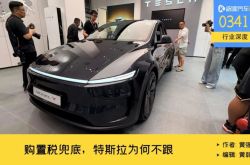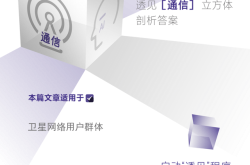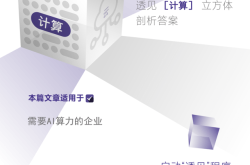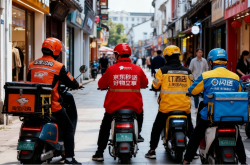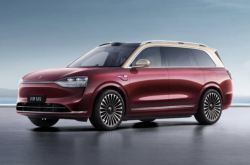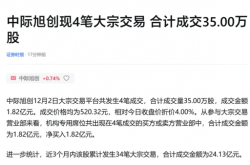How Can the Automotive Industries of China and Germany Collaborate? The Journey from Ecological Synergy to Global Integration
![]() 09/28 2025
09/28 2025
![]() 571
571
Produced by Zhineng Technology
The China-Germany Cooperation Forum at the 2025 World New Energy Vehicle Congress was a treasure trove of insights.
The roundtable forum featured four distinguished representatives from ZF, CATL, Electrocore, and DeepRoute.ai. They delved into the nuances of China-Germany cooperation, sustainable development, and ecological synergy, drawing from their unique vantage points as multinational corporations, leading battery manufacturers, innovative R&D startups, and autonomous driving technology firms.
The speeches of the four guests not only illuminated the distinct development stages and challenges faced by their respective companies but also highlighted the broader opportunities and dilemmas in China-Germany industrial exchanges.
Through this dialogue, it became clear that amidst cultural disparities, policy hurdles, and market rivalry, cooperation and innovation are the linchpins for the automotive industries of China and Germany.
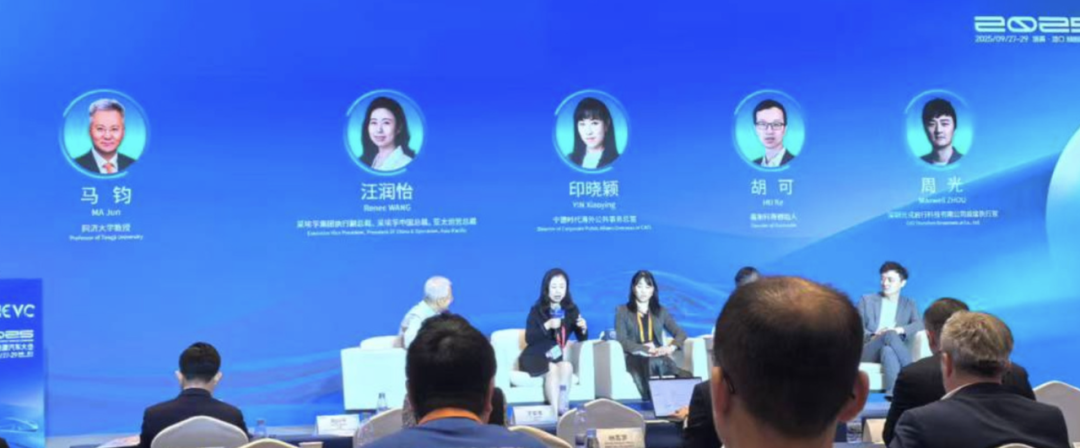
01
Opportunities and Challenges for Enterprises at Different Stages
The four guests shared their companies' developmental trajectories and the foremost challenges they encounter, offering a comprehensive view of the diverse scenarios faced by various enterprises in the globalization process.
Zhou Guang from DeepRoute.ai narrated the evolution of its autonomous driving business.
As a startup that originated in Silicon Valley and established its roots in China, DeepRoute.ai has witnessed rapid technological advancements in just a few years. Transitioning from reliance on high-definition maps for autonomous driving solutions to achieving urban-level NOA (Navigate on Autopilot) with end-to-end large models, this end-to-end approach has propelled autonomous driving to a new qualitative level.
Zhou Guang revealed that the company now has over 130,000 mass-produced vehicles equipped with its autonomous driving solutions, with a monthly delivery volume of 30,000 units, signaling swift market acceptance of this innovative model.
Nonetheless, DeepRoute.ai also confronts challenges. With escalating global concerns over AI safety and data privacy, Chinese companies must seek suitable partners when expanding overseas to achieve true localization.
Zhou Guang's advocacy for "In China, For China" and the future "In Europe, For Europe" is a strategic response to this trend.
Hu Ke, the founder of Electrocore, approached the subject from a different perspective.
As a startup specializing in battery R&D tools, Electrocore does not directly manufacture batteries but enhances the efficiency and quality of the entire industry chain through digital R&D tools.
Hu Ke acknowledged that the company's value lies in "selling water and tools," providing R&D support for battery manufacturers, automotive OEMs, and energy storage companies. Unlike traditional manufacturing firms, the business logic of such tool-based companies is rooted in customer value and R&D acceleration. Only by aiding customers in reducing costs and enhancing performance can they achieve sustainable development.
Electrocore's dual Sino-German heritage provides a robust foundation for deep cooperation in both markets and positions it as a bridge in facilitating the internationalization of the battery industry.
Yin Xiaoying, representing CATL, offered insights from a different vantage point.
As a global leader in power batteries and energy storage batteries, CATL's growth trajectory is a microcosm of China-Germany cooperation. From becoming BMW's battery supplier in China in 2012 to investing in and constructing factories in Germany, Hungary, Spain, and other locations, CATL has transformed from a local enterprise to a global powerhouse over the past decade.
CATL's current greatest challenge is not technological but the intricate policy environment. With European and American countries placing increasing emphasis on the security, carbon footprint, and compliance requirements of the new energy supply chain, CATL continues to navigate through the ever-evolving policy landscape.
Wang Runyi, President of ZF China, injected a perspective from a century-old enterprise into the discourse.
ZF, initially an aviation gear manufacturer, has evolved into a global leading supplier of transmission and chassis systems. Wang Runyi highlighted that the company's 110-year history is attributed to its ability to provide technologies that cater to the demands of each historical era, from gears to transmissions, and then to electric drives and autonomous driving assistance systems.
She underscored that amidst the nascent new energy vehicle demand in Europe and North America, the rapid development of the Chinese market compels multinational corporations to accelerate R&D and launch innovations in China first.
Whether it is steer-by-wire, integrated braking systems, or 800V silicon carbide electric drives, ZF opts to launch them first in China, driven by market demand. This underscores the pivotal strategic position of the Chinese market for multinational corporations.
Both startups and century-old enterprises grapple with the question of "how to find their positioning in globalization." Startups need to leverage partners to surmount market barriers, while large enterprises must maintain technological leadership and strategic flexibility amidst multiple market regulations.
02
Paths to Sustainable Development and China-Germany Ecological Synergy
As the forum transitioned to its second phase, the guests engaged in a more profound discussion centered around "sustainable development" and "ecological synergy," which not only pertain to their own business models but also the future trajectory of the entire industry chain.
From the perspective of an AI company, Zhou Guang conceded that in terms of sustainable development, autonomous driving is more of a downstream player with limited direct contributions.
However, he emphasized that the rapid evolution of AI and large models can significantly enhance travel efficiency and safety, thereby indirectly fostering energy conservation and the sustainability of urban transportation.
This technology-driven sustainability complements the direct emissions reductions in the manufacturing sector.
Hu Ke proposed a dual dimension of "economy and quality," stating that sustainable development is primarily about commercial sustainability. Enterprises must create tangible value for customers; otherwise, all innovations lack viability. The sustainability of quality is equally paramount.
After China's new energy vehicle industry enters a large-scale stage with 16 million units, the next growth frontier for the industry is no longer sales volume but quality and recycling. Hu Ke specifically mentioned the International Battery Alliance, in which both Electrocore and CATL participate, as well as relevant committees on battery passports and circular economy.
These cross-border, cross-industry cooperation platforms are providing institutional safeguards for the sustainable development of the battery industry and forging new ties for China-Germany cooperation.
Yin Xiaoying elaborated on CATL's plans for zero carbon emissions. CATL has set ambitious goals to achieve carbon neutrality in its core operations by 2025 and throughout its entire value chain by 2035, realizing this vision through energy conservation, supplier collaboration, and the utilization of renewable energy.
CATL has already established 10 zero-carbon factories worldwide, including in Germany, showcasing not only the global execution capabilities of Chinese companies but also setting a benchmark for cross-border cooperation.
Wang Runyi closely linked "sustainability" with "survival." She stated that before delving into sustainability, enterprises must first ensure their survival at each historical juncture. ZF's ability to endure a century is precisely because it can seize critical technological turning points in each era. Today, the rapid development of the Chinese market has become the "survival soil" for multinational corporations.
She emphasized that China's speed and economies of scale offer unprecedented opportunities for multinational corporations, compelling ZF to transfer its core R&D to the Chinese market to navigate global market uncertainties.
Her speech not only serves as a wake-up call for European counterparts but also poses a practical proposition for China-Germany cooperation: how to strike a new balance amidst cultural differences and market rhythm disparities.
In the realm of ecological synergy, going it alone is no longer sufficient to navigate the complex international environment.
◎ Zhou Guang stated that AI companies must rely on overseas partners to achieve localization, a practical necessity for "working together as a team."
◎ Hu Ke emphasized that cross-border cooperation is not merely about technology sharing but also about the joint establishment of systems and standards.
◎ Yin Xiaoying hoped that CATL could spearhead more Chinese companies in going global and jointly forge a complete ecosystem.
◎ Wang Runyi pointed out from the perspective of multinational corporations that Chinese experience can feed back into the European market and foster the common progress of the global automotive industry.
The future of China-Germany cooperation transcends mere technological collaboration; it is a complex endeavor involving system and ecological synergy. External factors such as policy environments, cultural differences, and market rhythms are all testing enterprises' adaptability and cooperation acumen.
Summary
The speeches of different companies presented a panoramic view, spanning from technological breakthroughs to industrial collaboration, from localization to globalization, and also unveiled the intricate challenges currently faced by the industry.
Sustainable development is no longer a singular environmental issue but a systemic project encompassing business logic, quality assurance, and enterprise survival. Ecological synergy necessitates overcoming cultural and institutional disparities. Going it alone is no longer feasible; only by "working together as a team" can one stand firm in the global competitive arena.
The scale and speed of the Chinese market are reshaping the strategic choices of multinational corporations, presenting both challenges and opportunities.

